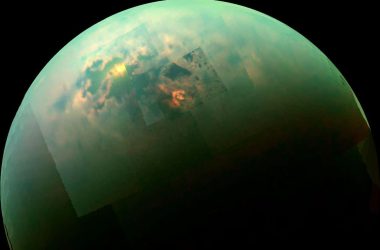An artist’s impression of NASA’s Voyager spacecraft
NASA/JPL
In a recent development, NASA has re-established communication with its Voyager 2 spacecraft after experiencing a week-long disconnection. Despite the successful reconnection, engineers continue to face challenges in fully restoring communication capabilities.
Launched in 1977, Voyager 2 has been on a remarkable journey towards the outer reaches of the solar system and beyond, venturing into interstellar space. Currently, it stands as the second-most distant spacecraft from Earth, trailing behind its sister craft, Voyager 1, by nearly 24 billion kilometers. Remarkably, after 46 years since its launch, several of Voyager 2’s scientific instruments, including its magnetometer and cosmic ray detector, are still functioning and transmitting valuable data back to Earth.
However, on July 21st, an incident occurred that disrupted communication between mission control and the spacecraft. An unintentional orientation adjustment caused Voyager 2’s antenna to veer off just 2 degrees away from Earth, resulting in a loss of signal transmission. Consequently, engineers were unable to send commands to correct the spacecraft’s alignment.
Fortunately, there is some positive news amidst the setback. On July 31st, NASA detected a faint trace of what is known as a “carrier signal” from Voyager 2. In normal circumstances, this signal would contain real-time data if the antenna were correctly aligned. However, due to the misalignment, the signal was too weak to extract any meaningful information.
“We see the ‘heartbeat’ signal from the spacecraft… so we know the spacecraft is alive and operating,” stated Suzanne Dodd, the manager of the Voyager project at NASA’s Jet Propulsion Laboratory in California, in a statement provided to The Science Spotlight. While unexpected, the confirmation of the signal’s existence is not surprising given the spacecraft’s long-standing resilience.
Nevertheless, the situation remains challenging as engineers lack the ability to send commands to Voyager 2 while its antenna remains pointed away from Earth. Dodd expressed, “We are now generating a new command to attempt to point the spacecraft’s antenna toward Earth. There is a low probability that this will work.”
If the new command fails, there is still hope. Voyager 2 is programmed to autonomously reset its orientation a few times a year to address scenarios like the current one. The next automatic reset is scheduled for October 15th, and communication is expected to resume at that time. In the meantime, the spacecraft’s operators will persist in their efforts to reorient it and diligently monitor the heartbeat signal.
Topics:








